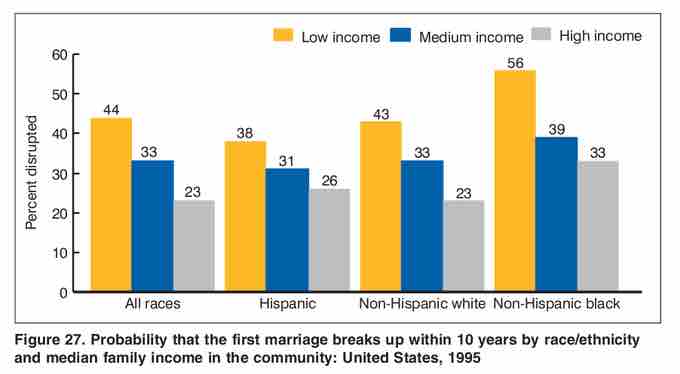Family life - marriage and childbearing patterns, household composition, and home stability - are strongly influenced by social class. In the United States, the probability of a first marriage ending is substantially higher for couples with low socioeconomic statuses than for those in the middle or upper class. Research shows that the higher rates of divorce for individuals in lower social classes can often be attributed to the greater financial stress these couples face, though factors like class expectations can also play a role .

Probability of First Marriage Dissolution by Race/Ethnicity and Income (1995)
This graph shows that among all races and ethnicities, low income households are more likely to experience divorce than middle and high income households are. Thus, social class bears on rates of marriage dissolution.
Globally, the birth rate in countries with large impoverished populations is much higher than in wealthier countries, indicating that income and wealth play a role in shaping family structures. Demographers have identified a direct relationship between average number of children per household and the economic development of a nation. Today, less developed countries struggle with overpopulation while many governments in developed countries are instituting policies to deal with low birth rates. In nations with high levels of fertility, upper class individuals tend to have more children than their lower class peers. In nations with low levels of fertility, upper class families exhibit even lower fertility than average.
Social class has both a cause and an effect relationship with family composition. For example, single-parent households are likely to have a lower social class because they violate social norms. At the same time, single-parent families can contribute to financial and social instability. A single parent will often face higher costs (in the form of paid childcare), lower earnings (loss of the second parent's income or loss of time spent at work), or both.